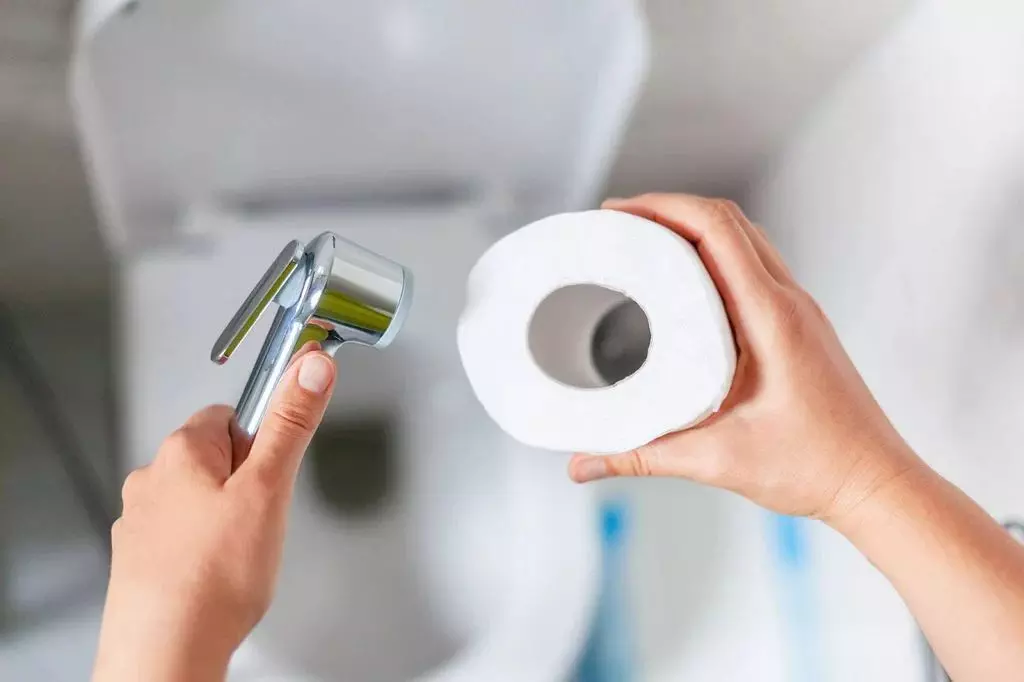World Toilet Day: Experts back India’s water-based habits as scientifically healthier option
India’s approach to post-toilet cleansing is based on the principle of washing rather than wiping, an idea that predates modern plumbing
By - Anoushka Caroline Williams |
Representational Image
Hyderabad: World Toilet Day offers a moment to examine a daily act that shapes hygiene, infrastructure, and public health: how we clean ourselves after using the toilet.
While toilet paper dominates Western sanitation habits, India remains largely a water-first country. The contrast is not about tradition alone; it is rooted in dermatology, plumbing design, environmental impact and behavioural science.
This article explores why toilet paper has not become a mainstream choice in India and why water continues to be the preferred method.
Cultural practices and long-established hygiene patterns
India’s approach to post-toilet cleansing is based on the principle of washing rather than wiping, an idea that predates modern plumbing.
“Water-based cleansing systems existed in parts of India long before flush toilets entered homes,” says Dr P Lakshmi Prasad, sociologist and sanitation researcher, speaking to NewsMeter. “For many communities, water symbolised physical and ritual cleanliness. That cultural framework still guides behaviour.”
According to a 2023 consumer habits survey (industry data), less than 15 per cent of Indian households use toilet paper as the primary cleaning method, and most use it only for drying.
The dermatology perspective: Water reduces irritation
Dermatologists point out that toilet paper is often abrasive, especially for people with sensitive skin, eczema or haemorrhoids.
“Dry wiping can cause micro-tears in the skin, leading to itching, rashes and infection,” says Dr Sameera K, Consultant Dermatologist, Hyderabad. “Water helps dilute and wash away bacteria and reduces friction. For the Indian climate, which is hot and humid for most of the year, water is gentler on the perianal skin.”
She notes that Indian diets, often high in spices, chilli and oil, may cause softer stools and increased irritation, making water even more beneficial.
Plumbing and Infrastructure: Indian systems are built for water, not paper
Indian plumbing systems largely rely on narrower pipes than those used in North America or Europe. This makes large amounts of toilet paper unsuitable.
SK Anand, plumbing engineer and technical consultant to municipal water boards, explains: “Most Indian buildings, even in metros, use 75–90 mm drainage pipes. These are not designed for heavy toilet paper disposal. Tissue accumulation is a major cause of blockages in apartments and public toilets.”
This is why many public restrooms explicitly instruct users not to flush paper.
Water-based health faucets, bidet sprays or bucket-and-mug setups align better with the plumbing reality.
Environmental impact: Tissue is resource-intensive
Toilet paper may seem harmless, but its environmental cost is significant.
Production requires large quantities of:
• wood pulp
• water
• chemicals for bleaching
• energy for processing and transport
According to sustainability analysts, one roll of toilet paper consumes around 140 litres of water in production, far more than what a typical Indian uses for washing in a single day.
“Switching from water to toilet paper would multiply India’s sanitation-related resource consumption,” says Divya Menon, environmental economist. “India simply does not have the forestry resources for mass toilet-paper adoption.”
On the other hand, water-based cleaning when combined with low-flow taps or bidets can be efficient and environmentally manageable.
Public Health: Water offers higher removal of bacteria
Studies on perianal hygiene consistently show that washing is more effective than dry wiping in removing faecal matter and reducing the bacterial load.
“Water dislodges residue more thoroughly than tissue,” says Dr Gaurav Shah, gastroenterologist. “In countries with high temperatures and humidity, inadequate cleaning can cause irritation and bacterial overgrowth. Water reduces that risk.”
This is one reason bidet adoption is increasing even in Western countries.
Behavioural Science: Why most Indians can’t switch to toilet paper
Behavioural researchers point out that toilet habits are often the last to change in a household.
“There’s an element of ‘early imprinting’ with toilet behaviour,” explains Dr Nandita Rao, behavioural scientist. “People learn their cleansing method very young. Changing it feels unnatural because it is tied to the body’s sense of comfort and completeness.”
For many Indians, using only toilet paper feels incomplete and unhygienic, not just unfamiliar.
The availability of affordable handheld bidet sprays, now standard in most homes, reinforces the preference.
When is toilet paper useful in India
Despite its limitations, toilet paper has growing relevance in:
• Travel (especially on highways or in areas with poor water access)
• Drying after washing
• Office buildings and airports with Western-style restrooms
Hybrid use, water + tissue, is becoming common among younger urban Indians.
The Way Forward: Designing sanitation for local realities
Experts agree that toilet design should reflect the needs of the population, not aspirational global trends.
“Sanitation policies must match cultural habits, climate, and infrastructure,” says Anand. “India should invest in better drainage, low-flow bidets, and water-efficient fixtures instead of copying tissue-based systems.”
The future of Indian sanitation, therefore, is likely to be water-centric, supported by:
• efficient bidets
• improved plumbing standards
• eco-friendly practices
• public awareness on hygiene
Conclusion
Toilet paper is convenient but not optimised for India’s climate, culture, or infrastructure. Water continues to be the more hygienic, gentle, and sustainable option for most households. As urban sanitation systems evolve, India’s water-based habits are not outdated; they are aligned with dermatological science, public health priorities, and environmental realities.